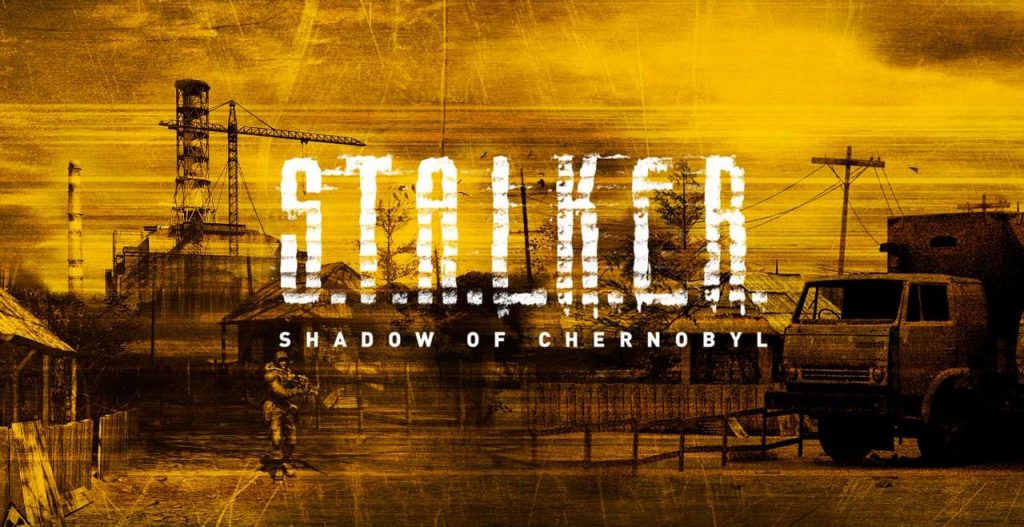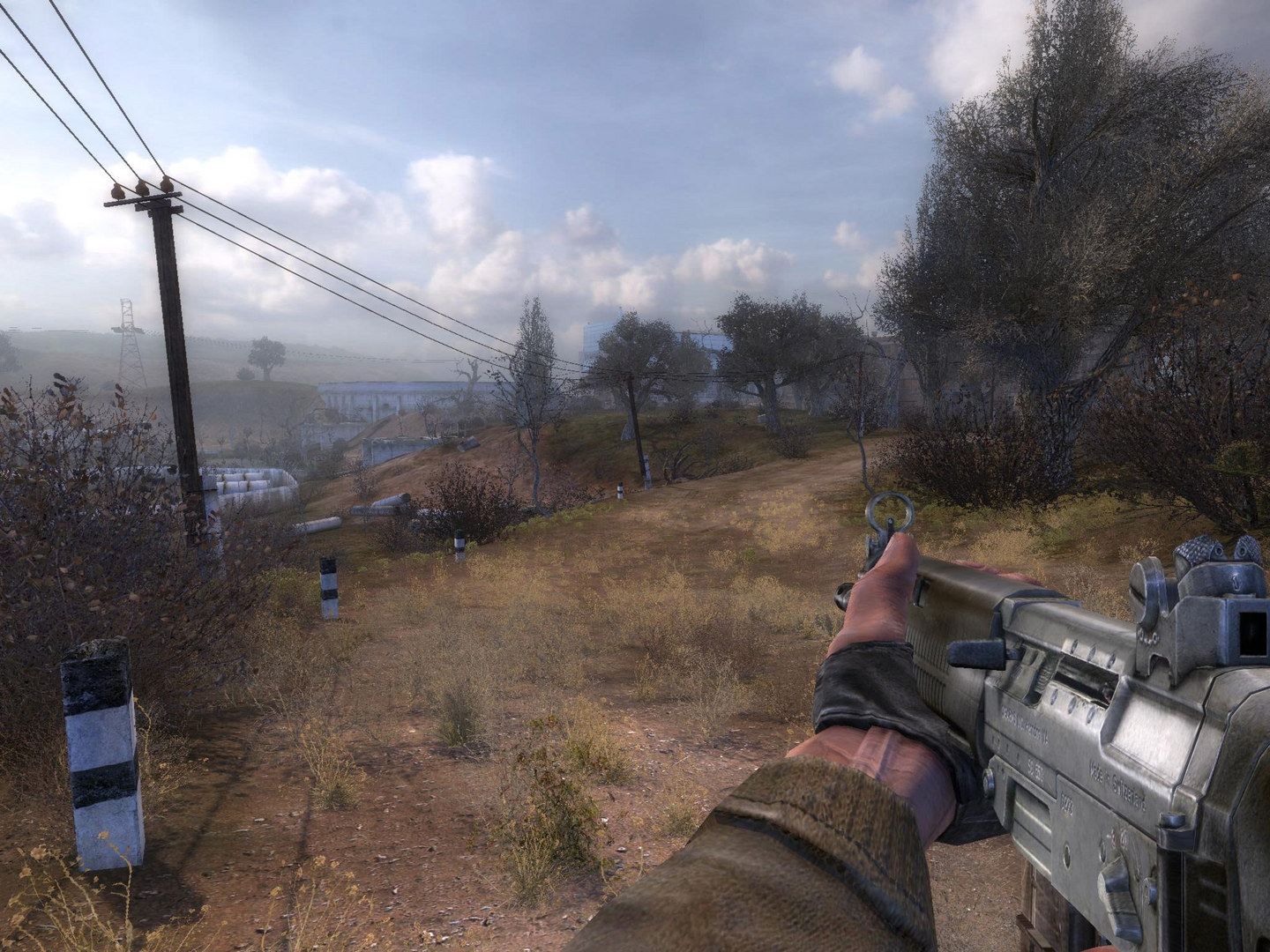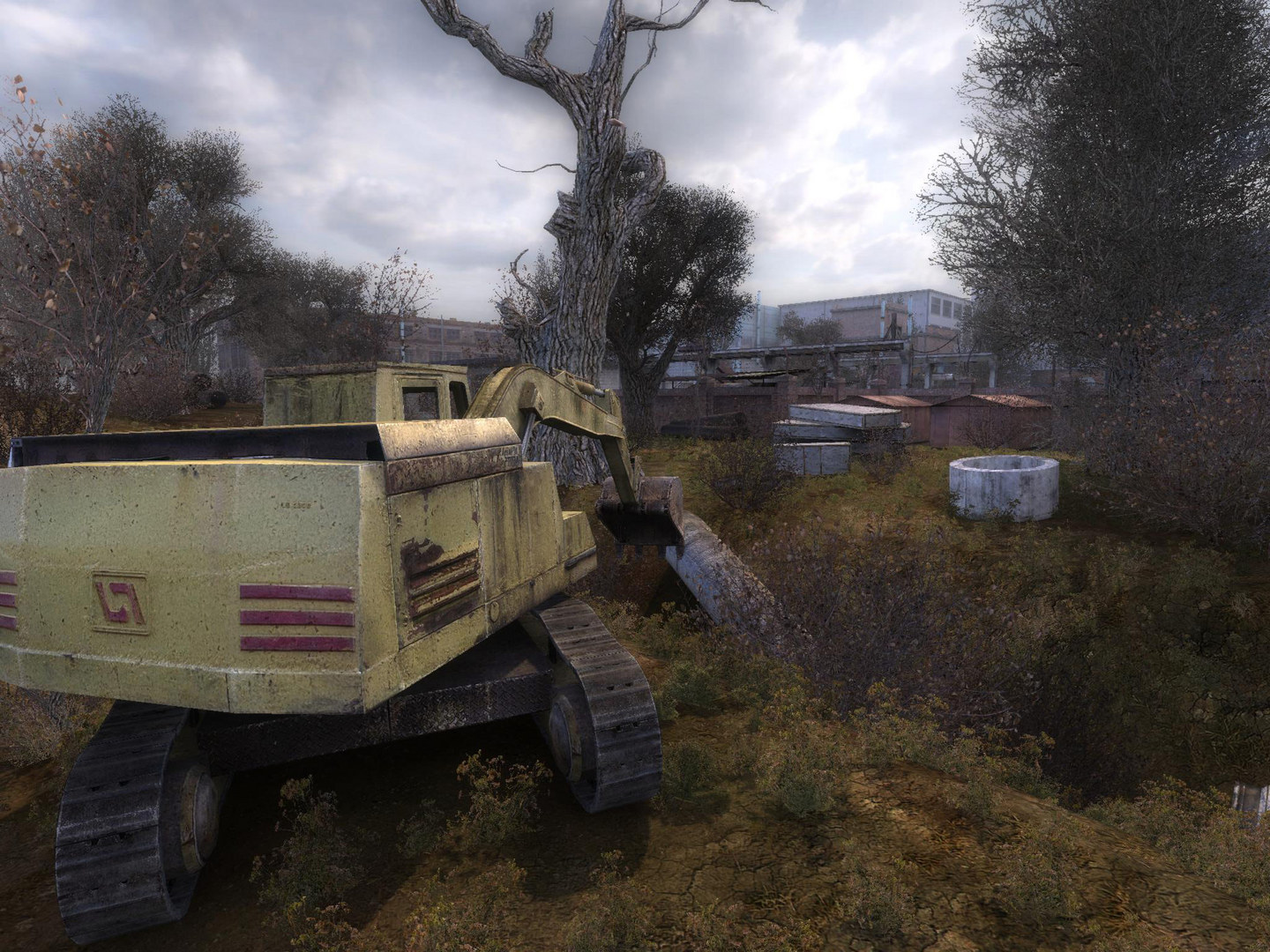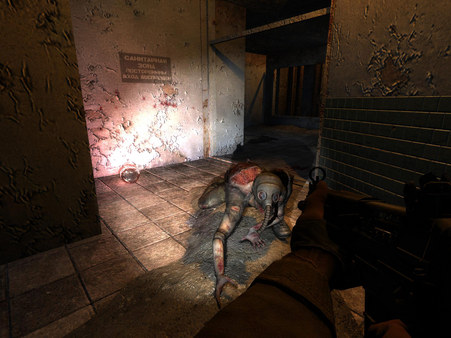
Provided by GSC Game World
Stalker: Shadow of Chernobyl and the Echoes of History
Stalker: Shadow of Chernobyl is the quintessential cult game. Released in 2007, it is a messy, buggy, brutally difficult survival game set in the real-life Chernobyl nuclear site in Ukraine. The game has earned its cult following precisely because it is is shrouded in the terrifying eeriness of a real place, staring history directly in the face.
If you ask fans why they love and continue to play, update, and mod a game from 2007 their answers are startlingly uniform; it is for atmosphere alone. It is because The Zone feels different from any other game environment, ever. The Zone, the site of a real historical disaster, with the ticking of the geiger counter and the dismal color palette and the radiation suits, is the heart of Stalker. Paranomal anomalies and mutants abound, but Stalker always feels a bit real.
On February 24, 2022 Stalker became too real for me. Russia launched a full-scale invasion of Ukraine with an attempt to directly seize Kyiv- advancing through the Chernobyl exclusion zone. Russian commandos seized the Chernobyl nuclear power plant after quickly overwhelming the Ukrainian national guardsmen defending the zone and thousands of Russian troops began advancing south through the dead forests, their armored vehicles kicking up radioactive dust, eventually fighting a pitched nine-day battle at Slavutych on the southern edge of the zone where hundreds died. Confused and under-supplied Russian soldiers, mostly young guys, the same demographic as the many Russian Stalker fans who populate fan channels, dug trenches and fighting positions in the irradiated ground and reported vomiting and dizziness. Rumors spread of radiation sickness overcoming the invading soldiers.

Half a world away, Stalker still has thousands of daily players, but I wasn’t among them. I couldn’t play a combat game based on brutal survival which took place in the delicately modeled actual sites of combat operations. Running though the zone dropping your enemies and rummaging through their backpacks for more AK ammo and canned food was something that was really happening. The creeping irradiation, the scramble to find food or safety, the gun battles were all happening to real people, even to other Stalker fans. This isn’t conjecture; in a 2021 French documentary on the ongoing Donbass conflict, Ukrainian troops lovingly show off how they have decorated their trenches to resemble specific Stalker levels. Soldiers casually wear Stalker patches and an ultranationalist volunteer unit in Ukraine’s Territorial Defense Force has named itself after the in-game Stalker faction “Clear Sky” – in their hodgepodge armor and mismatched Kalashnikovs they uncannily resemble the in-game characters.
GSC Game word, currently working on Stalker 2, has had to flee their offices. A level designer has now been living in her hallway for three months to escape artillery attacks. “It’s hard to design violent quests when there is a real war outside” she says in a preview video. Several lead developers and programmers have joined the Ukrainian military and have replaced their Stalker 2 updates with video messages from machine-gun nests where they vow to fight until victory. One of the top comments on the Stalker 2 update video, in Russian, is from a Russian Stalker fan; “I’m so sorry this is happening. I want this war to be over.”
The eeriness of the Zone now feels like stepping into somebody else’s suffering, not in the general sense of consuming media from or set in a country at war, but in the specific, in of stepping into the shoes of actual people who are bleeding and dying in the actual place you are standing in the game. It is not comfortable to play Stalker now, but I have to check myself here- it was never meant to be.

The Chernobyl exclusion zone in Stalker is both the setting and the story of the game. In Stalker the irradiated and abandoned zone from the 1986 disaster, with its Soviet apartment buildings crumbling and covered in moss, its poisoned red forest of dead trees, has been subject to a second, unexplained, event. Now the Zone is full of mysterious anomalies which reverse gravity, emit unexplained energies, and produce “artifacts” which do not obey known physical laws. Mutants now prowl the Zone along with rival Stalkers and, chillingly, the zombified bodies of the Stalkers who have ventured too close to the Zone’s center- the Chernobyl nuclear power plant. Characters whisper rumors that the powerplant now contains a mysterious monolith which can make your innermost wishes come true. The Zone that GSC Game World created is rendered in muted browns and greys, with an innovative NPC AI which gives every zone inhabitant a fully unscripted, independent life of their own. The player, one of the titular “Stalkers” who traverse the Zone, follows a story which is almost skeletal and mostly focused on a series of fetch quests, until it suddenly culminates in a series of huge text info-dumps which make little sense to anyone unfamiliar with 1920’s Soviet cosmist philosophy.
There are low hanging mists and frequent rain and most of the plants are dead. Especially for what is fundamentally a shooter, Stalker is a sparse and empty game. The Zone is not full of enemies to be gunned down, it has inhabitants which you may see in the distance, trundling under heavy backpacks. You walk through recreations of real places- the Pirpyat fairgrounds, the Yanov train station, which are recreated in exquisite detail. The developers took multiple research trips to the actual Chernobyl exclusion zone (which is only a few hours from the GSC Game World office in Kyiv) to design the game world, but they also drew upon their own Soviet childhood memories. The built environment of Soviet daily life- the bus stops, the summer camps, the prefabricated apartments and sturdy government office desks- are designed from living memory. Many of the game developers, locals of Kyiv and the surrounding area, had to flee the area as children when the Chernobyl power plant melted down. The Zone is an alien landscape, sure, but it is an alien landscape which emerged out of real horrors which happened a casual drive away from where the game’s creators went to school, which touched their lives. The experience of realism doesn’t just come from designers knowing how the real Zone looks, but from knowing how The Zone feels.
The fans return and return to Stalker because of this feeling. The horror and supernatural elements of the game feel not scary, but eerie because they are happening in a world that feels real. The Zone is a place that is just on the other edge of comprehensibility. The combat- this is still a shooter- is the same. Your old Soviet guns rust and degrade with use but your Kalashnikov will kick with a measured weight and it will maim or kill a rival Stalker with just a few shots- or maybe he’ll get you first. Stalker has built a legend around an atmosphere of grounded and tangible desperation..

Stalker’s Zone has prompted a decade of replays precisely because it is a place where history and fiction overlap and echo off each other. It is not the first time that this has happened. Stalker takes it’s story and name from Andrei Tarkovsky’s 1979 movie of the same name, a sparse art film about desperate Stalkers venturing to the center of a poisoned and abandoned disaster zone in search of a mysterious wish-granting artifact. Overgrown, poisoned and subject to deadly invisible forces Tarkovsky’s Zone is littered with mysteriously abandoned industrial facilities and rows of neatly parked decaying tanks. Tarkovsky films a place which looks and feels almost exactly like the Chernobyl Zone- except he made the movie seven years before the disaster. When Soviet troops were mobilized in 1986 to enter the radioactive powerplant, a heroic clean-up which doomed many, they called themselves Stalkers, after the movie. The film is the disaster is the game is the war. Stalker cannot be divorced from the history and the place which produced it.
The fans from Russia and Ukraine realize this. In the Russian Stalker mod “The Winds of Time”, as the player fights through haunted laboratories, you hear the literal echoes of news broadcasts announcing the Chernobyl disaster. As you turn the corner a ghostly apparition emerges from the wall. It is not a mutant or monster, or even a rival Stalker, despite the radiation suit; it is the ghost of a Chernobyl clean-up worker. A Stalker from another time, another disaster. Online, fans from the region like to joke that the game is simply a simulator of life in post-Soviet Europe or ruefully wonder at this rate, when the mutants will show up. GSC Game World simply states that “Ukraine will endure, as it always has.” Yet the Zone, and Stalker is not just the summation of current suffering or the tourism of pain that came before. It comes from all these things, yet is somehow uncannily beyond them. After all these years, it still promises something unpredictable and unknown. So no matter what happens now, Stalker, come on – the Zone is waiting.
If you like what we do here at Uppercut, consider supporting us on Patreon. Supporters at the $5+ tiers get access to written content early.





